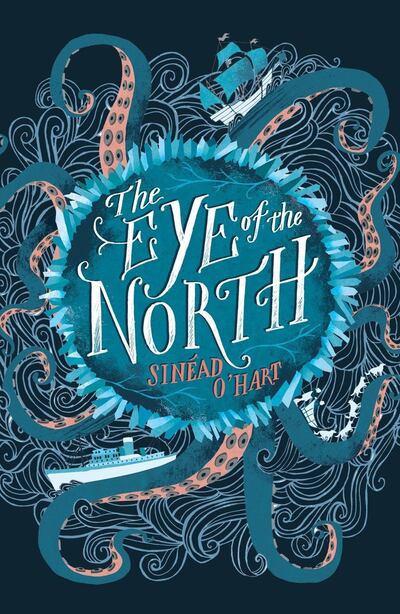
When my younger brother started primary school, our parents marked the occasion by investing in a set of encyclopaedias. These handsome, faux-leather bound books were supposed to be – as my mother wrote on the title page of the “A” volume – a way for us to “climb the mountain of knowledge, so that we could enjoy the view from the top”. I loved those books, and still do; as a child I read them for the sheer pleasure of finding things out. Often, I’d go to them to look something up and end up getting lost in a world of cross-reference and curiosity, leafing through page after page for hours.
With these main volumes came a smaller, more colourful set of children's reference books, which I also loved. They had titles like About Us, Our Universe, How Things Work and Poems and Rhymes, but my favourite one by far was the one called Myths and Legends. It was here that I first came across the Norse mythology that would so interest me as an adult, and where I first met Beowulf and Gawain, about whom I'd later go on to write in my MA and PhD dissertations. It was here I first saw illustrations of monstrous sea-creatures big enough to strangle whales with their tentacles, and encountered the Yeti, and found myself entranced by the detailed drawings of prehistoric rock carvings and the ancient gods of long-vanished peoples.
When I was eight – so, shortly after these encyclopaedias became part of our family – I read a book called Elidor by Alan Garner. This slim little volume, which had a unicorn on the cover and pages even then yellowed with age, was a gift from my older cousin; she had loved it as a child and felt that the time was right to pass it on to me. It changed the course of my life, leading me not only to explore the rest of Garner's work, but also, in time, the novels of Susan Cooper and Catherine Storr, Philippa Pearce and Diana Wynne Jones, Penelope Lively and Pat O'Shea, Orla Melling and Michael Scott – in short, great writers for children (and adults) who make heavy use of mythology, folklore and fantasy in their novels.
The gift of Elidor also led me to my love of medieval literature, much later in life, and was a direct influence on the choices I made when it came to the subject of my graduate study. I simply couldn't resist the call of fantasy, even then; medieval romance with its cast of knights and dragons, giants and fairy queens, magical artefacts and bespelled swords was where my heart belonged.
First attempt
My first attempt at writing a book of my own, unsurprisingly, was a predictable mishmash of fantasy tropes, a clumsy pastiche of Enid Blyton, LM Montgomery and Tolkien. It featured an elvish queen trapped in an enchanted sleep (because, of course), a headstrong young girl with red hair (my nod to Anne-with-an-E Shirley), and a cast of characters which included a dwarf, a man with a shady past who was nicknamed Wanderer – any resemblance to a certain Strider is completely coincidental – and a very clever dog. It even boasted ballads, which were sung at moments when the plot ran thin, and there were plenty of those. This book was, as hardly needs to be said, irretrievably awful. It proved one thing, however: I had it in me to write.
After I finished this first creation, it would be a long time before I’d try writing another novel. I had ideas, I kept notes, and I had several false starts, including one which would be significant to my later work, but I couldn’t face the idea of creating another full-length story for over 15 years.
When I did eventually manage to start writing again, I knew I wanted to pursue a career as a children’s novelist. I set about acquiring an agent, but my first three attempts to write a good enough book were met with either outright failure, or gentle rebuff. One agent – the one I would eventually sign with, Polly Nolan of the Greenhouse Literary Agency – was kind enough to tell me she could see potential in my work, but that I wasn’t there yet. Then, a voice sprang from nowhere into my mind one day, a strange small voice who began her story with a memorable opening line: “For as long as she could remember, Emmeline Widget had been sure her parents were trying to kill her…”
A story unfurled
I followed that strange small voice, and a story began to unfurl – a story which featured mythical creatures, legends come to life, and a fantasy world where airships can be powered by clouds. This story was a joy to tell, and it secured me the agent of my dreams as well as a two-book deal. It featured everything I had loved as a child – creatures of the deep, ice-horses inspired by the steeds of the Norse gods, the Northern Lights, and two brave children who face all odds to save the people they love – and its roots are deep in the books I grew up reading.
Without my parents' generous gift of the encyclopaedias which entranced me, and my thoughtful cousin who passed on an old, much-loved book, who knows what shape my reading and writing life would have taken. One thing I know: I would never have written my debut novel, The Eye of the North, without these influences. I was lucky enough to meet the world of legend at just the right time, and it has given me a lifetime's enjoyment, and (with any luck) a deep well of inspiration.
The Eye of the North by Sinead O'Hart is published by Stripes Publishing





















